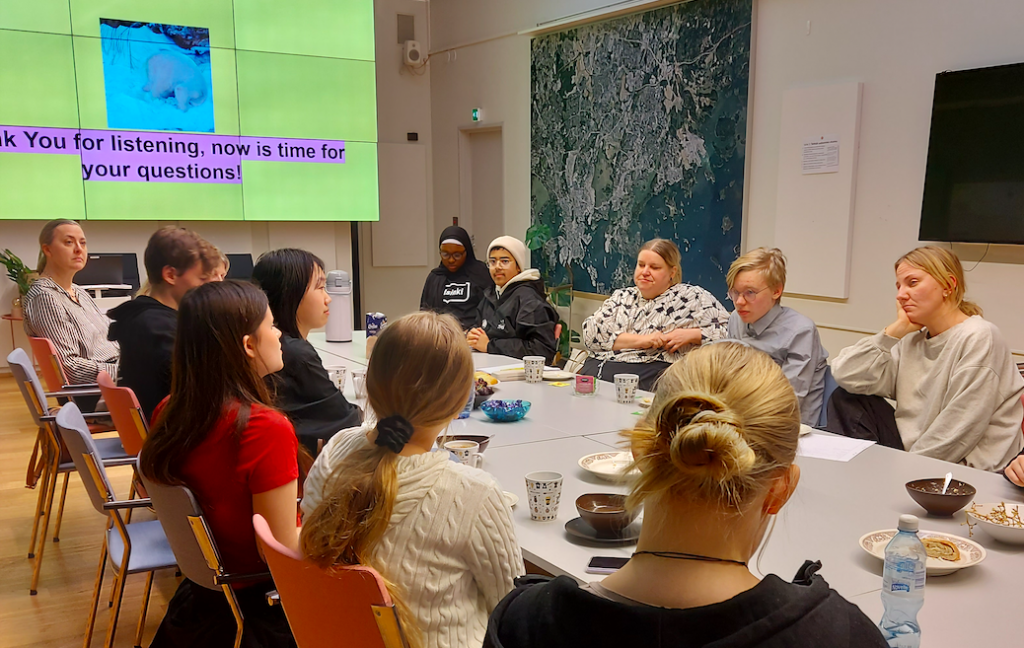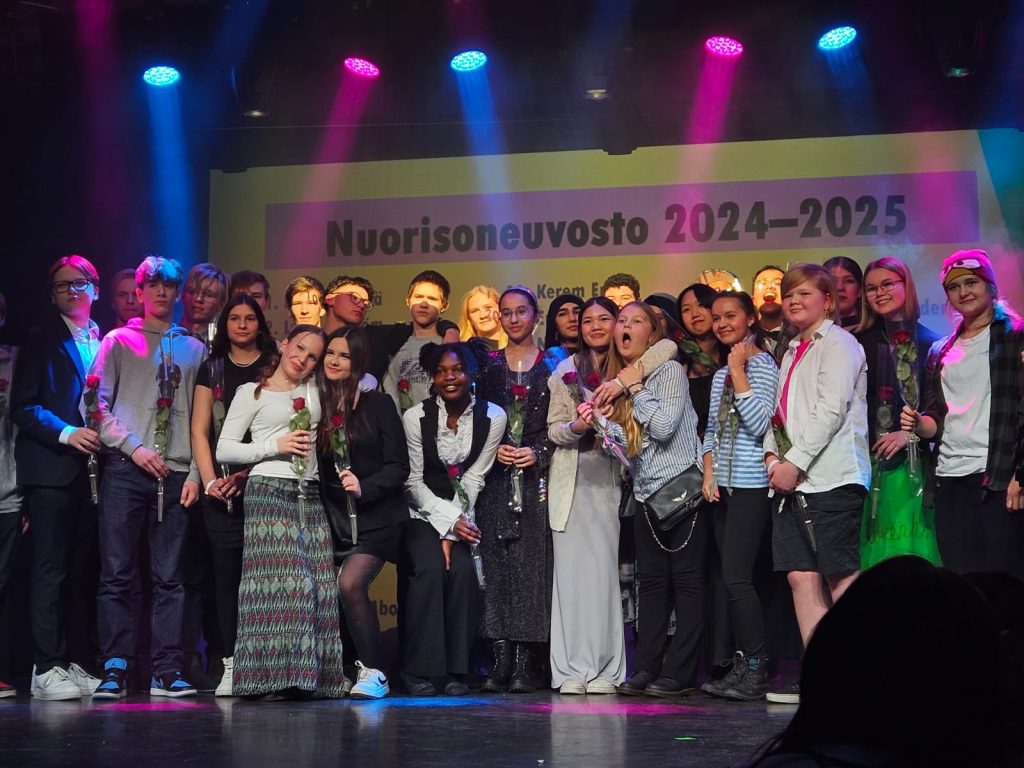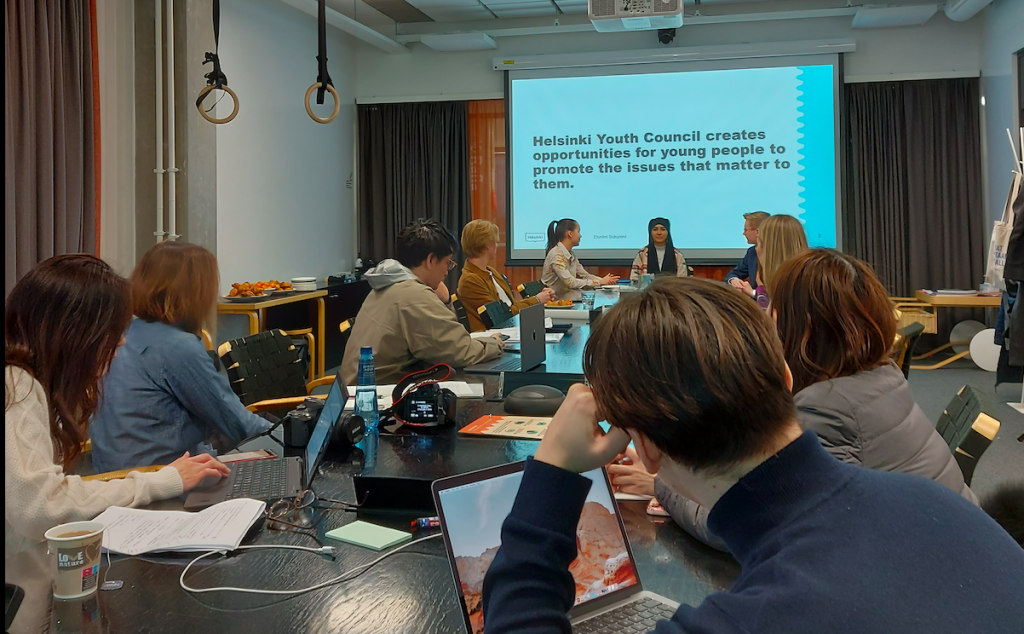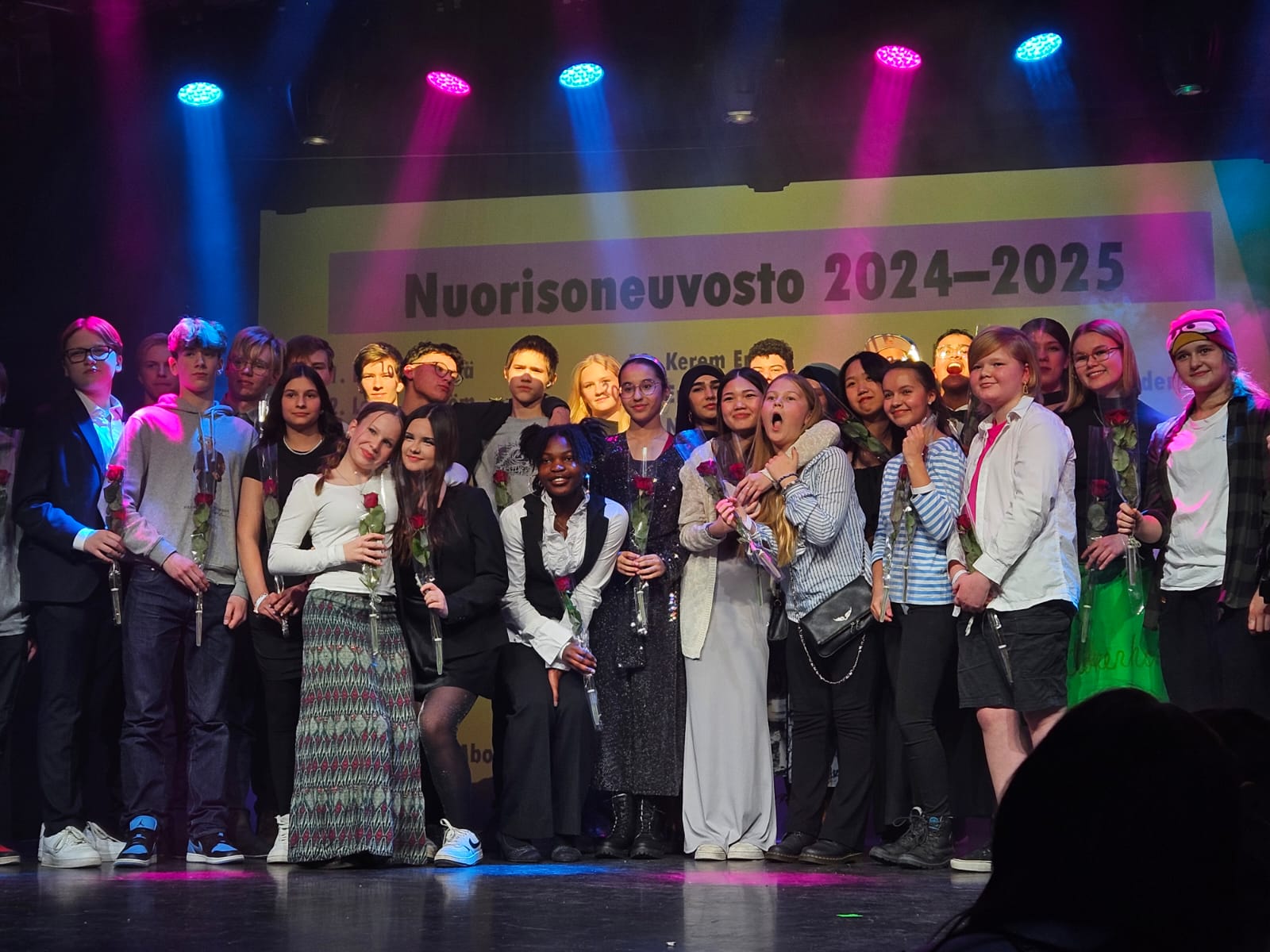Established in 2013, the Helsinki Youth Council serves as a platform bridging young voices with local governance. Initially formed through collaborative efforts, it prioritised inclusive representation, addressing diverse youth concerns. Over the years, it led numerous initiatives, advocating for education, sustainability, mental health, and employment opportunities. Facilitating regular dialogues between youth and officials, it enhanced communication channels and expanded digitally to engage a wider audience. Evolving with the city’s dynamic youth demographics, the council remains dedicated to amplifying youth voices and enabling them to inform policies, embodying Helsinki’s commitment to an inclusive and participatory environment for its younger residents. In this interview with Henna Vasara, Helsinki Youth Council Councilor, you will learn about the journey to establish the Helsinki Youth Council, how the electoral process ensured inclusivity, how the youth council’s decisions impact the policies of the City of Helsinki, what the Helsinki Youth Participatory Budgeting program entails, and the challenges and lessons learned in the process.
Why did the participatory process begin?
The establishment of the Helsinki Youth Council in 2018 marked the formalisation of a previously similar, yet unofficial, mechanism for youth representation. This development followed the enactment of legislation requiring every Finnish city to establish a youth council. Consequently, this mandate made it obligatory for all municipalities to have a consultative body dedicated to representing the interests of young people. While Helsinki had a form of youth representation before 2018, the current council operates in compliance with the new national legislation, ensuring that the voices of youth are systematically included in municipal decision-making processes.
What is the maturity of particaptory democracy and citizen engagement in Helsinki?
Over the past decade, the Municipality of Helsinki has undergone significant changes in how it engages with citizen participation and participatory democracy. Each division within the municipality now follows its own participation plan, aligning with the City’s strategic emphasis on integrating citizen participation into various levels of policymaking. A notable evolution has been the approach to youth participation; previously concentrated within schools and youth services, there is now a unified framework across the entire city aimed at amplifying the voices of children and young people. This collaborative effort seeks to bolster youth involvement in Helsinki through multiple channels.

In addition to the overarching framework, the municipality has introduced several participatory processes and tools specifically for young people. Among these initiatives is a system that allows young people to propose projects and receive support to implement them. Participatory budgeting processes have been established, including one dedicated to young people that has been in operation for a decade. Furthermore, various grants and student councils offer additional avenues for empowering the youth.
Despite these advancements, there is an acknowledgment of the ongoing work required to enhance participatory opportunities for young people. The municipality remains committed to developing ambitious and inclusive strategies to ensure the active involvement of youth in the civic life of Helsinki.
The Helsinki Youth Council is endowed with its own budget, empowering members to make autonomous decisions regarding its allocation. This financial autonomy extends beyond the council itself, as various youth initiatives also possess their own dedicated budgets. Specifically, the Youth Initiative system operates through an online platform, enabling young people to submit proposals directly to decision-makers. This platform, alongside the Helsinki Youth Participatory Budgeting program, provides distinct funding pools from which young individuals can influence how Youth Services’ resources are distributed.
The annual budget for Youth (Participatory) Budget alone totals approximately €150,000. However, this figure represents just one component of the financial resources available to youth. This funding mechanism allows for the support of larger projects, such as organising festivals or launching significant campaigns on specific issues, by enabling applications for additional funding from the City’s budget.
How inclusive was the process?
The Helsinki Youth Council initiative is expansive, relying on the concerted efforts of numerous individuals. Among these are two officials serving as Youth Leaders for the Council, in addition to the person responsible for coordinating the elections. The Council comprises 15 work units, collaboratively managed by students and youth workers. These youth workers play a pivotal role in the community, primarily tasked with engaging young people and encouraging their participation in the Youth Council. They achieve this through visits to schools and local youth centres, where they interact directly with young people.

The elected members of the Youth Council also contribute significantly to this effort by promoting participation in the initiative and encouraging their peers to stand for election. The electoral process for the Youth Council spans two weeks, during which members visit schools to facilitate voting. Students are provided the opportunity to cast their votes at their schools or at youth centers, with assistance from youth workers. Although voting is also possible at the Central Library, the majority of votes are received from schools, underlining the importance of collaboration with educational institutions. With around 100 schools in Helsinki, the reach and impact of this initiative are extensive, as youth workers and Council members work diligently to ensure the electoral process is accessible to all eligible students.
The Helsinki Youth Council is deeply committed to fostering an inclusive environment, prioritising efforts to connect with and represent marginalised communities. This commitment is manifested through proactive outreach to these communities, ensuring their voices are heard and represented within the council. By engaging directly with individuals in their educational and living environments, the council seeks to create a diverse and inclusive membership.

To achieve this, the council employs targeted outreach initiatives
aimed at recruiting members from a broad spectrum of backgrounds. Additionally, the council makes concerted efforts to ensure meeting arrangements are accessible to all, thereby encouraging participation from individuals across various demographics. This approach underscores the council’s dedication to embracing diversity and ensuring that the council’s composition and activities reflect the wide array of perspectives and experiences within the community of youth.
How did the participatory process develop?
The Helsinki Youth Council, comprising 30 young representatives, holds monthly meetings to discuss and address issues important to the youth of Helsinki. These meetings are an opportunity for all elected youth representatives to come together in a large plenary session. In addition to these plenary sessions, the Youth Council has a Board consisting of eight members, which also meets monthly, resulting in two reaccuring meetings each month. During these sessions, youth representatives have the privilege of inviting experts to discuss various topics, and they also engage with the mayor and vice mayors of Helsinki biannually, providing a platform to voice their concerns and interests directly to city leaders

Moreover, the Youth Council is represented in the City Council, allowing for a youth perspective in all city council meetings and ensuring youth representation in municipal committees. Youth representatives can also initiate meetings with department heads and propose policy recommendations, enhancing their role in shaping city policies.
While the decisions made by the Youth Assembly are advisory and not binding on the City Council or municipal administration, they play a critical role in influencing city policy through discussions and providing opinions on new legislation and city commission initiatives. Engaging with experts and elected officials, the Youth Council can push forward important initiatives and impact decision-making processes at the city level.
The Youth Participatory Budget is another avenue for engagement, with 15 local youth work units in Helsinki each coordinating their own budgeting processes. This initiative results in 50 to 80 projects annually, offering young people a direct say in the allocation of resources for community projects. Additionally, the Youth Services department supports young people in developing ideas for the city-wide Participatory Budgeting process, which is open to all citizens. This assistance includes helping young people navigate various channels to realise their ideas, often focusing on smaller, leisure-related activities that Youth Services can directly implement.
What were the outcomes and lessons learned of running the council?
With over a decade of experience working with youth, specifically between 13 and 14 year olds, and having been involved with youth councils in various Finnish cities, the leader of the Helsinki Municipal Work Unit holds a lot of expertise. Reflecting on their own early involvement as a member of their hometown’s youth council, the Unit Head highlights the distinct and impactful role of the Helsinki Youth Council in influencing policy. They note that, compared to smaller cities, Helsinki offers young people significantly more substantial opportunities to affect policy changes. This advantage is attributed to the direct access Helsinki’s youth have to key political figures, including those in the Parliament, enabling them to potentially influence national policy, not just local matters.
They observe that the ambitious nature of the youth in Helsinki sets them apart from their counterparts in other cities, emphasising their keen interest in making a tangible impact. However, they also point out a disconnect in perception, noting that some adults may not fully appreciate the unique perspective and contributions of young people. They emphasise that while the youth council members are not professional politicians, they are experts in matters affecting their demographic. This expertise, based on their lived experiences and perspectives as young individuals, is sometimes overlooked by adults, who may fail to recognise the value and legitimacy of their contributions to policy discussions.
What challenges did you encounter?
The COVID-19 pandemic significantly impacted the dynamics of the Helsinki Youth Council. With 30 individuals making up the council, the concept of “group as power” is emphasised, underlining the collective strength inherent in their numbers. However, the pandemic introduced challenges to this collective effort, particularly with regards to teamwork and maintaining cohesion among the members due to restrictions on physical meetings and other related limitations.

Despite these hurdles, the challenges were not only seen as obstacles by members, but as integral parts of a developmental journey for those involved. The council is seen as a valuable learning and growth opportunity for its members, allowing them to navigate and engage in participatory processes effectively. This perspective reframes the difficulties encountered during the pandemic as essential components of the learning curve, emphasising resilience and adaptability in the face of adversity.
The emphasis on seeing beyond immediate difficulties to the broader process of youth engagement and empowerment suggests a positive outlook on the council’s ability to adapt and thrive, even under challenging circumstances. This resilience highlights the council’s role in nurturing young individuals’ capacity to contribute meaningfully to their community and develop their participation and engagement over time.
What are the elements that could be transferred to other contexts? What are the conditions of a successful transfer?
The key to effectively engaging with youth is to ensure that municipal initiatives are co-created with the young people themselves. This collaborative approach ensures that their desires and preferences are understood and addressed from the outset, facilitating more effective and relevant youth engagement strategies. While the involvement of experts and adults is deemed necessary, one should underscore the importance of starting with the youth’s perspective as a foundational principle.
From an organisational standpoint, it is crucial for the municipality and its adult employees to recognise and respect the role of the Youth Council. Acknowledging the council’s significance within the broader context of youth engagement strategies is essential. However, there is also an understanding that a single group, regardless of its size, cannot encompass the diverse perspectives and needs of all young people. This recognition leads to the acknowledgment that relying solely on the Youth Council for insights into youth-related matters is insufficient.
To address this, the Unit Head advocates for the creation of multiple channels for youth participation, ensuring that a wide range of young people have the opportunity to be heard and that their varied needs are identified and met. This multifaceted approach to youth engagement acknowledges the complexity and diversity of young people’s experiences and perspectives, emphasising the necessity of implementing a variety of mechanisms to capture and respond to the broad spectrum of youth voices and concerns. This strategy not only enhances the inclusivity and effectiveness of youth engagement efforts but also reinforces the importance of respecting and valuing the contributions of all young people within the municipal framework.
Conclusion
The Helsinki Youth Council, established in 2013 and formalized in 2018, exemplifies Helsinki’s commitment to integrating youth voices in local governance. This initiative was driven by national legislation mandating youth council formation across Finnish municipalities, enhancing systematic youth participation in municipal decision-making. The council, supported by a structured approach to youth engagement and a budget of approximately €150,000 for youth initiatives, focuses on issues like education, sustainability, mental health, and employment. Recruitment efforts extend across schools and youth centers, ensuring diverse and inclusive representation. The council’s operations include regular meetings, participatory budgeting, and direct interactions with city officials, facilitating a meaningful dialogue between Helsinki’s youth and its leaders. Despite challenges posed by the COVID-19 pandemic affecting group dynamics, the council viewed these as opportunities for learning and adaptation. The Helsinki Youth Council’s experience highlights the importance of co-creating initiatives with young people and establishing multiple channels for youth participation. This approach not only amplifies diverse youth perspectives but also ensures their active involvement in shaping a more inclusive and participatory municipal environment.
This case study can be found in The Toolbox of Experimental Participatory Methods, produced in the Horizon2020 EUARENAS project.


